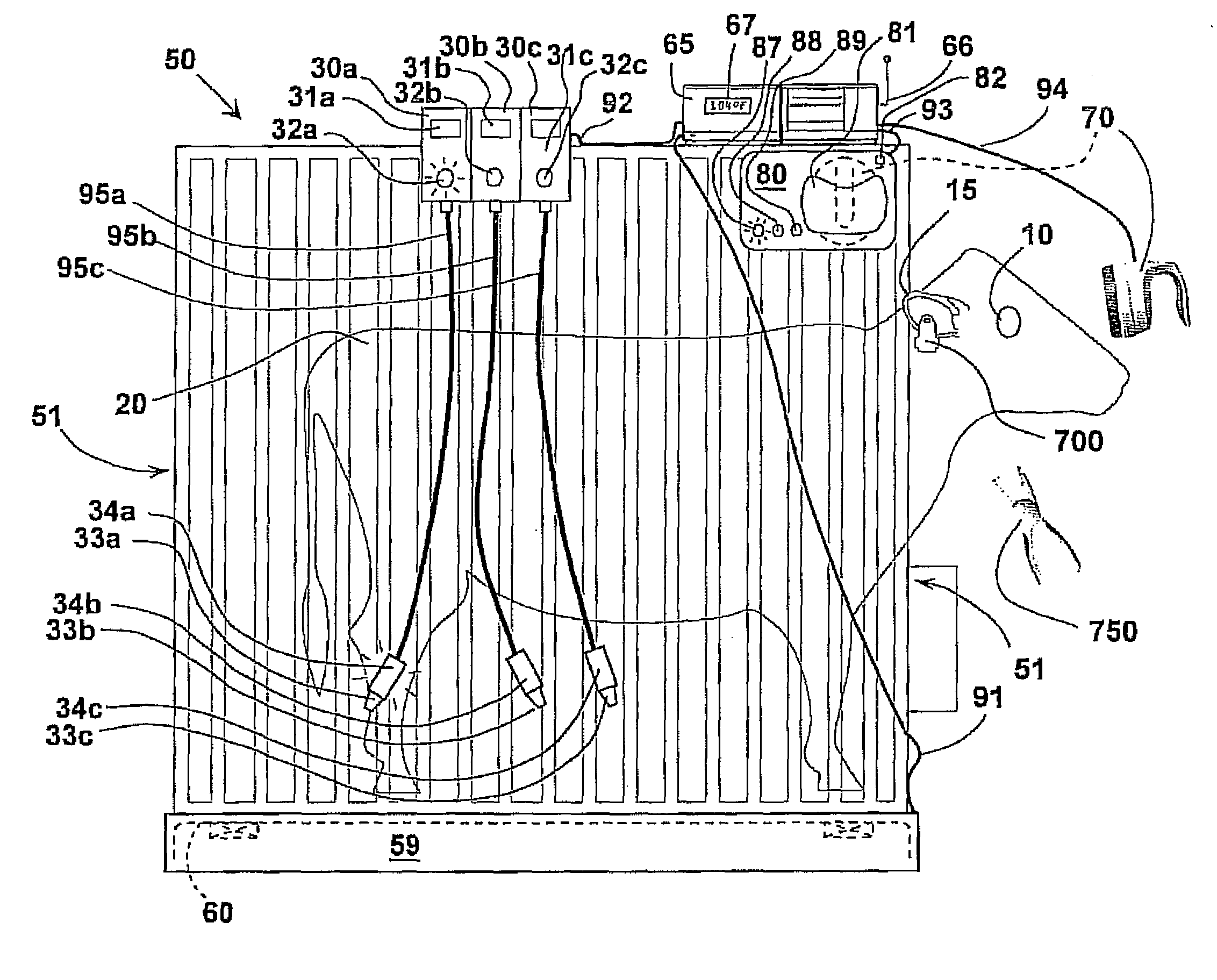Core-Temperature Based Herd Management System and Method
a management system and temperature-based technology, applied in the field of livestock herd management, can solve the problems of affecting the profitability of feedlots, difficult to determine what particular type of treatment is applied, and a large part of the herd is lost, so as to minimize unnecessary treatment of livestock, increase feedlot profitability, and reduce the effect of cos
- Summary
- Abstract
- Description
- Claims
- Application Information
AI Technical Summary
Benefits of technology
Problems solved by technology
Method used
Image
Examples
Embodiment Construction
[0038]While our inventions are much more basic than any particular embodiment, one can gather a partial appreciation for some of the possible benefits of the broader inventions and possible interplay between various elements of the inventions in the course of considering presently preferred embodiments. A few embodiments that are presently thought to include the most preferred are depicted in relation to FIGS. 1-16 of the drawings, where similar reference numerals are used for similar elements of various embodiments. The systems and methods depicted therein allow for efficient and effective herd management that draws on reliable yet efficient predictive assessment automatically coupled with corresponding treatment and tagging of the herd, together with related measures for sorting and data management to achieve comprehensive livestock management.
[0039]The result yields multiple applications in the feedlot industry, as well as in the dairy and packing industries and in portable syste...
PUM
 Login to View More
Login to View More Abstract
Description
Claims
Application Information
 Login to View More
Login to View More - R&D
- Intellectual Property
- Life Sciences
- Materials
- Tech Scout
- Unparalleled Data Quality
- Higher Quality Content
- 60% Fewer Hallucinations
Browse by: Latest US Patents, China's latest patents, Technical Efficacy Thesaurus, Application Domain, Technology Topic, Popular Technical Reports.
© 2025 PatSnap. All rights reserved.Legal|Privacy policy|Modern Slavery Act Transparency Statement|Sitemap|About US| Contact US: help@patsnap.com



